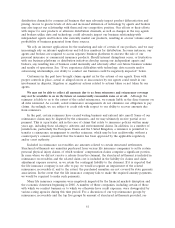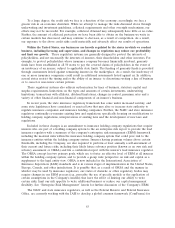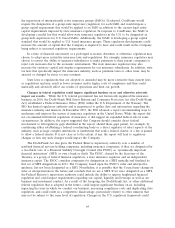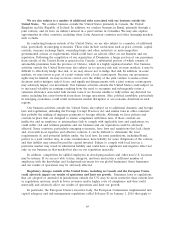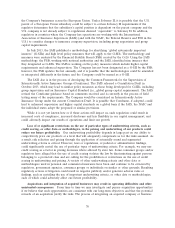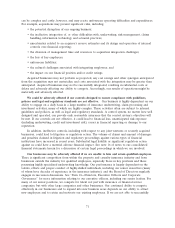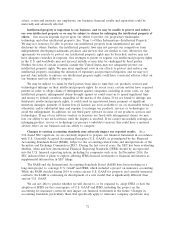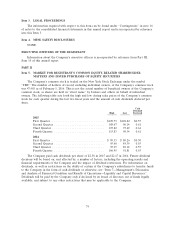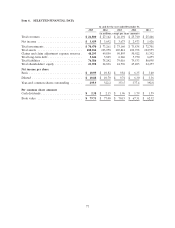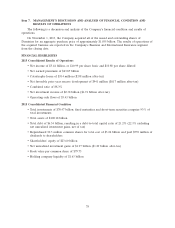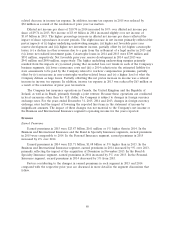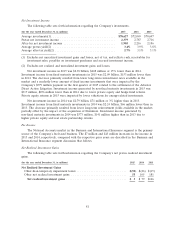Travelers 2015 Annual Report Download - page 71
Download and view the complete annual report
Please find page 71 of the 2015 Travelers annual report below. You can navigate through the pages in the report by either clicking on the pages listed below, or by using the keyword search tool below to find specific information within the annual report.can be complex and costly, however, and may create unforeseen operating difficulties and expenditures.
For example, acquisitions may present significant risks, including:
• the potential disruption of our ongoing business;
• the ineffective integration of, or other difficulties with, underwriting, risk management, claims
handling, information technology and actuarial practices;
• uncertainties related to an acquiree’s reserve estimates and its design and operation of internal
controls over financial reporting;
• the diversion of management time and resources to acquisition integration challenges;
• the loss of key employees;
• unforeseen liabilities;
• the cultural challenges associated with integrating employees; and
• the impact on our financial position and/or credit ratings.
Acquired businesses may not perform as projected, any cost savings and other synergies anticipated
from the acquisition may not materialize and costs associated with the integration may be greater than
anticipated. Acquired businesses may not be successfully integrated, resulting in substantial costs or
delays and adversely affecting our ability to compete. Accordingly, our results of operations might be
materially and adversely affected.
We could be adversely affected if our controls designed to ensure compliance with guidelines,
policies and legal and regulatory standards are not effective. Our business is highly dependent on our
ability to engage on a daily basis in a large number of insurance underwriting, claim processing and
investment activities, many of which are highly complex. These activities often are subject to internal
guidelines and policies, as well as legal and regulatory standards. A control system, no matter how well
designed and operated, can provide only reasonable assurance that the control system’s objectives will
be met. If our controls are not effective, it could lead to financial loss, unanticipated risk exposure
(including underwriting, credit and investment risk), errors in financial reporting or damage to our
reputation.
In addition, ineffective controls, including with respect to any joint ventures or recently acquired
businesses, could lead to litigation or regulatory action. The volume of claims and amount of damages
and penalties claimed in litigation and regulatory proceedings against various types of financial
institutions have increased in recent years. Substantial legal liability or significant regulatory action
against us could have a material adverse financial impact. See note 16 of notes to our consolidated
financial statements herein for a discussion of certain legal proceedings in which we are involved.
Our businesses may be adversely affected if we are unable to hire and retain qualified employees.
There is significant competition from within the property and casualty insurance industry and from
businesses outside the industry for qualified employees, especially those in key positions and those
possessing highly specialized underwriting knowledge. Our performance is largely dependent on the
talents, efforts and proper conduct of highly-skilled individuals, including our senior executives (many
of whom have decades of experience in the insurance industry), and the Board of Directors regularly
engages in succession discussions. See ‘‘Item 10—Directors, Executive Officers and Corporate
Governance’’ for more information relating to our executive officers, including our senior leaders. For
many of our senior positions, we compete for talent not just with insurance or financial service
companies, but with other large companies and other businesses. Our continued ability to compete
effectively in our businesses and to expand into new business areas depends on our ability to attract
new employees and to retain and motivate our existing employees. If we are not able to successfully
71


